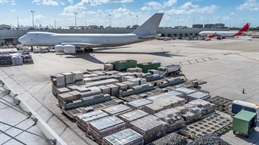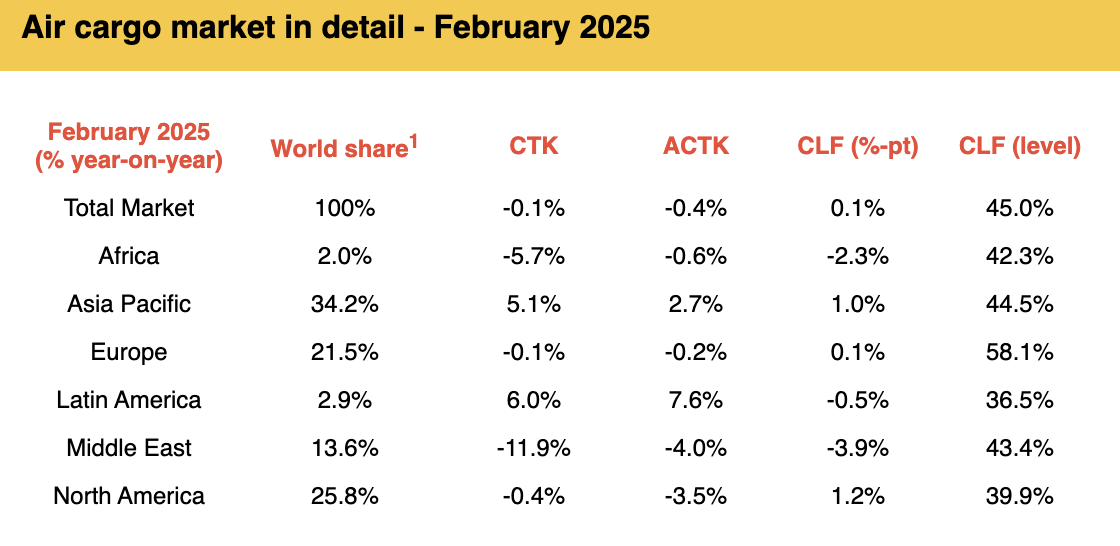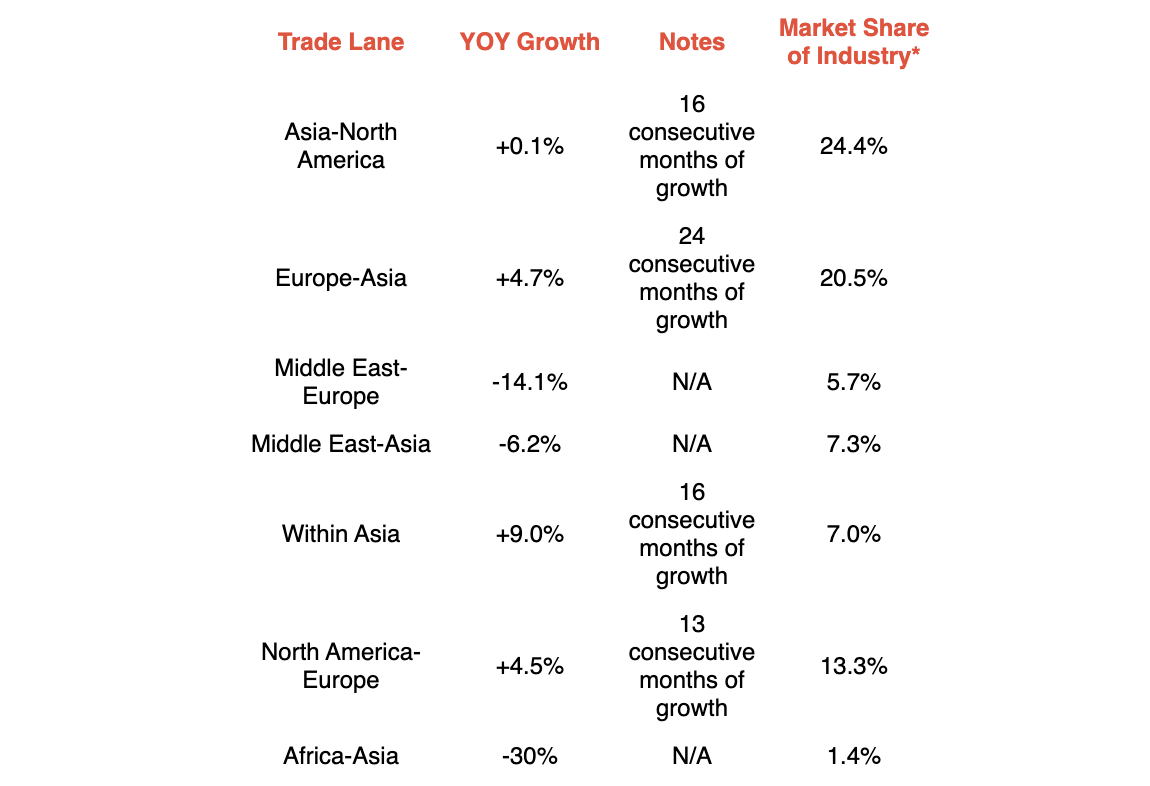
Global air cargo demand fell for the first time in nearly two years following an already sluggish start to the year, according to the latest data from the International Air Transport Association (IATA).
February 2025 data showed that total demand, measured in cargo tonne-kilometers (CTK), declined by 0.1% compared to February 2024 levels (+0.4% for international operations).
IATA said this marks the first decline since mid-2023.
In January, air cargo demand rose by 3.2% year over year, marking the 18th consecutive month of growth.
"February saw a small contraction in air cargo demand, the first year-on-year decline since mid-2023. Much of this is explained by February 2024 being extraordinary—a leap year that was also boosted by Chinese New Year traffic, sea lane closures and a boom in e-commerce," said Willie Walsh, IATA's Director General.
Walsh noted, however, that the rising trade tensions are putting a damper on the air cargo outlook.
"Rising trade tensions are, of course, a concern for air cargo. With equity markets already showing their discomfort, we urge governments to focus on dialogue over tariffs," he said.
For February, capacity, measured in available cargo tonne-kilometers (ACTK), decreased by 0.4% compared to February 2024 (+1.1% for international operations).

[Source: IATA]
February regional performance
In February, only Asia Pacific airlines and Latin American carriers experienced growth.
Asia Pacific airlines saw 5.1% year-on-year demand growth for air cargo in February, while capacity increased by 2.7% compared to the same period in 2024. Latin American carriers recorded 6.0% annual demand growth, the strongest growth among the regions. Capacity was up 7.6% year-on-year.
North American carriers saw a 0.4% year-on-year decrease in demand growth for air cargo in February, while capacity decreased by 3.5% year-on-year. European carriers saw a 0.1% year-on-year decrease in demand growth for air cargo in February, while capacity decreased 0.2% year-on-year.
Middle Eastern carriers saw air cargo demand decline 11.9% year-on-year, the slowest among the regions, as capacity decreased by 4.0% year-on-year. African airlines, meanwhile, recorded a 5.7% year-on-year decrease in demand for air cargo in February. Capacity decreased by 0.6% year-on-year.
In terms of trade lane growth, IATA said the Trans-Pacific corridor remained the busiest trade lane in February.

[Source: IATA]
Intra-Asia led growth, becoming the fifth busiest. Europe–Asia and Transatlantic routes also expanded, while Middle East–Asia and European routes declined.



